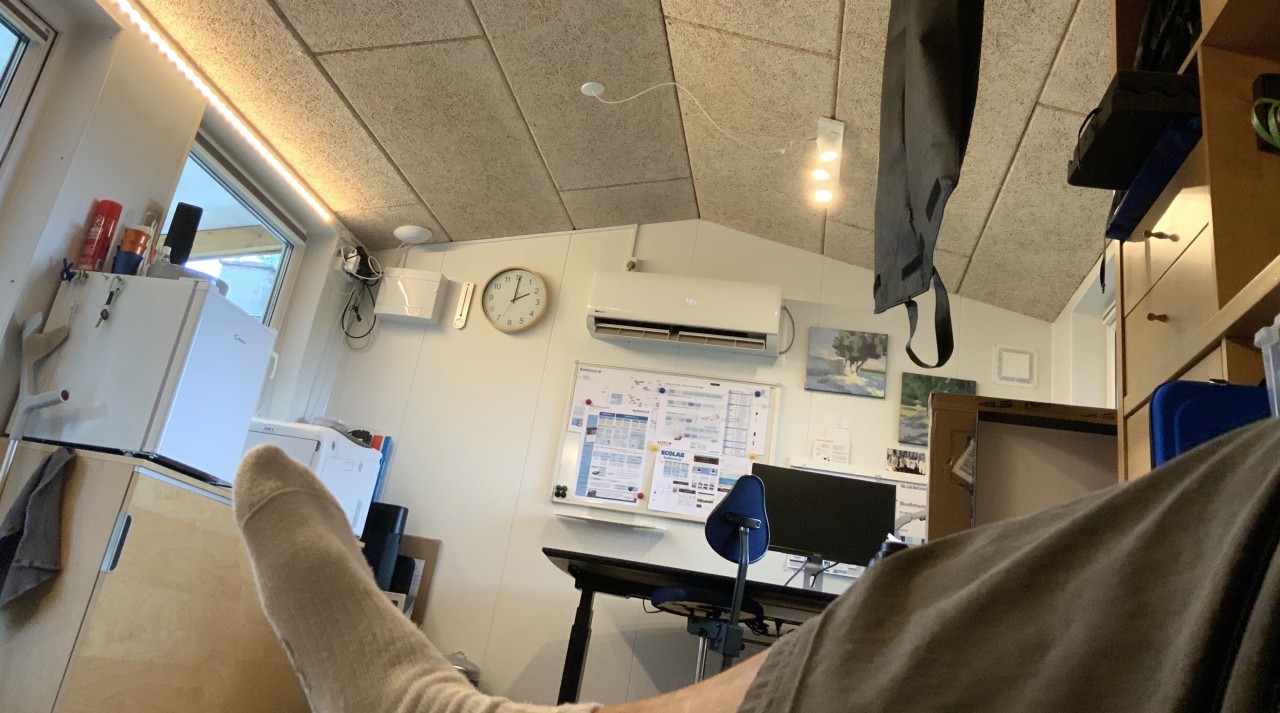Which specific behaviors and best practices are most important in the last minutes before the remote session starts? Check your readiness against the T-x countdown list below.
Est. read time: 6-8 minutes
By chance and good fortune – meaning wise clients – I was ready for the Coronavirus, at least technically. Ever since the no-fly aftermath of 911, I have been part of large scale remote training efforts, and in recent years the international leadership programs all have had remote sessions in-between live modules around the world.
So, while all live programs were postponed, I happily welcomed the 6.500 participants who would visit me in my backyard studio during the first months of these new ways of working.

The recommendations below contain the top3+9 pieces of operational advice I have shared with fellow leaders and trainers as I have tried to make their remote engagements easier and more enjoyable for all involved.
In the days leading up to the event
To be complete, the list starts with three high-level and too often overlooked recommendations that need consideration days if not weeks before takeoff.
- Get a second screen. You need all the digital real estate you can get your hands on, and a second screen is your most important investment. You need the space to “keep eye contact” as you leverage all the windows mentioned below. Less advanced online systems may not allow you to share individual applications, and thus your best approach is to use your secondary screen as the shared stage of all your materials. Should budget allow, get a better mic, and perhaps a secondary light source to make you stand out from the shadows.
- Pick where and how. Just showing yourself in Teams, Zoom, WebEx, or GoToMeeting is not enough; these fine live video streams are just where you have the meeting. You also need to plan how the session works as a process. Most likely, you will have to go beyond – or at least be very smart about – the built-in features of chat, drawing, Q&A, polling, and single button gestures like raised hands. In addition to your redesigned slides, you may need multidimensional questions or neverending whiteboards with prearranged forms and breakout spaces; look to apps like Mentimeter, Miro, or Klaxoon for a more varied and effective digital collaboration experience.
- Rehearse. Rehearse. Rehearse. Dry-run, pilot, sharpening the saw – call it what you will; it is needed. Especially for online events where stage jokes and supportive body language may not be available as connections drop out – technically or personally. You need to practice the shift from window to window, from speaker to speaker, from offering information to co-developing realization. As you rehearse together, note the critical phases and create a specific checklist for what is needed to start and run small/medium/large online meetings and events. Of course, feel free to use the list below as a starting point.
Consider previous articles about not canceling meetings and leading remote training for additional details on these first three items.

Countdown – the last minutes before going live
The following nine, hyper-specific recommendations are offered as a generic countdown checklist of the last 15 minutes before any remote engagement.
Takeoff -15 minutes: Reboot
A reboot frees resources and makes sure that no unnecessary applications are running in the background. A forgotten WhatsApp call may block your Teams video; don’t take the chance.
T-14: Place Your Gear
During the reboot, clean up your desk and place the things you need where you need them. The external microphone with catspaw, your water, and the printed slide-sorter view so you can jump to any slide when needed. If the space behind you is cluttered, pull down a screen, or pick an appropriate image as your virtual background.
T-13: Shine – But Not Too Much
Move the light or move yourself to make the light shine upon your smiling face. Be careful if you, like me, have hight temples and a balding forehead – a quick swap with an oil absorber sheet and spread of stay matte powder may be necessary to remove an unwanted glow.

T-12: Fire Up the Meeting
Now start the meeting, webinar, or event. Be ready with respectful welcome messages in the waiting area or an appropriate welcome screen that is shared immediately. Tell people where they are and what is expected of them – like muting mics and being ready to support fellow participants in the build-in chat or external channels.
T-10: Attend Yourself
Take a second seat as a participant in your meeting. Preferably join via a stand-alone device such as a backup laptop, tablet, or smartphone. For critical events, use something powerful enough to double as your fallback! The main point is to have a realtime view of your participant’s screen. To experience what they see and avoid talking about stuff in a hidden window or in a quality that is unsustainable. If seats are limited, remember to register yourself when you test your invitations.
T-09: Slides In A Window
When in a room, you present in full screen or speaker view. Not so remotely, the full screen will only cover needed sub-windows AND reduce quality by transferring unneeded bits that eventually get squeezed into smaller sizes of receiving screens. Always show your slides in a window! Scale the slide-window down, so you have the digital real estate needed. You want to leave ample space for the live feedback and information you need to be alert and responsive to your audience. If text becomes illegible, you have not completed the online redesign and you are using typefaces that are too small.
T-08: Arrange Sub-Windows
Use the freed up screen space to rearrange everything you need to run a smooth process. Typically I have a live (sub-)window for each of these: Slides, participant list with icons/gestures, chats – both built-in and others such as Slack, and questions. Further out or layered right below, I have the registration list, the slide sorter, an alternate browser, and my notes ready with any text, quotes, or links I may have to copy and paste into the meeting’s chat channel(s). For larger events, when I am co-facilitating, I also have the panelist channel open, see below.

T-06: Panel Confirmation
Don’t run interactive sessions with more than 16 people alone. Even the most information-dense content push in lectures and webinars will benefit from structured questioning and a free chat that serves as the participants’ glance around for help in a conventional room. Confirm the connection between co-facilitators and make sure you share a fast, direct, and private channel with your fellow panelists. As a minimum, use your smartphone with Messenger, WhatsApp, or equivalent as a dedicated screen to support each other with the flow, timing, and Q&A. For longer, perhaps full-day workshops with dedicated co-facilitators, this is the time to make sure specialized apps like SessionLab is running and ready to help you stay focused and on track as a team.
T-05: Keep Talking
No less than five minutes prior, all the above must be running smoothly! The last minutes before takeoff are for deep breaths and personal welcoming messages, for saying hi, and confirming voice and video. This has to be felt warm and welcoming and done in a continued voice, counting the number of participants who have joined. As remote people can’t see the room filling up with happy faces, you have to convey this social impact using voice and a smiling face. If you’re running an event with 100+ participants, and perhaps have only a few live video feeds, you also need to use these last minutes to select the volunteers that will help help you set the pace and act as live streaming learning representatives for the entire group of participants.
T-00: Take off – on time
There is little digital patience, and you may as well use the new ways of working to lead the way to new and better meeting habits – like starting on time! With the checklist above, you should be ready to serve your participants truly. Enjoy!

Photo Credits: Jon Flobrant, Bill Jelen, Jacek Dylag on Unsplash
If these lines were of any help to you, please share with those who may benefit from the same inspiration.




